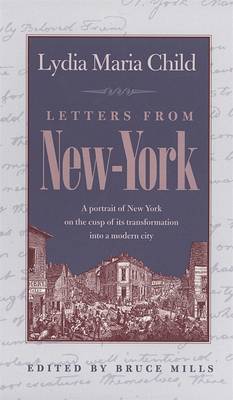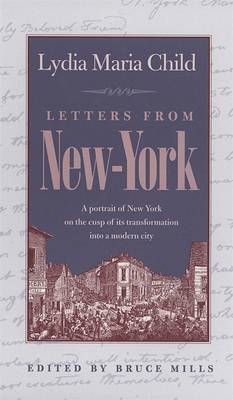
- Retrait gratuit dans votre magasin Club
- 7.000.000 titres dans notre catalogue
- Payer en toute sécurité
- Toujours un magasin près de chez vous
- Retrait gratuit dans votre magasin Club
- 7.000.0000 titres dans notre catalogue
- Payer en toute sécurité
- Toujours un magasin près de chez vous
Description
Prominent author and abolitionist Lydia Maria Child began writing her "letters" from New York in August 1841 as a response to the troubling realities marking her private and public life. In particular, she was preoccupied by her editorial duties at the National Anti-Slavery Standard and dismayed by the growing sectarian spirit of antislavery reform. Collected primarily from the pages of the Standard, her literary essays on women's rights, the preaching of African American minister Julia Pell, the Crosby Street Synagogue, animal magnetism, the engineering miracle of Croton Aqueduct, and countless other people, topics, and events capture the breathless and sometimes unsettling transformation of one representative hub of national life.In his general introduction and annotation of the text, Bruce Mills reconstructs the biographical and cultural context surrounding the book's publication and documents substantive changes between the Standard's version of the letters and the book form. This edition also includes ten letters that Child chose to omit from earlier editions, including essays on the farewell gathering for the Amistad captives at the African Methodist Episcopal Zion Church and the near lynching of British abolitionist George Thompson.
Long considered among Child's best writing, Letters from New-York still captivates readers with its moving descriptions of enduring cultural realities. It offers readers a telling glimpse of New York as an emerging urban center and is an invaluable addition to the library of American literature.Spécifications
Parties prenantes
- Auteur(s) :
- Editeur:
Contenu
- Nombre de pages :
- 304
- Langue:
- Anglais
Caractéristiques
- EAN:
- 9780820320779
- Date de parution :
- 01-11-98
- Format:
- Livre broché
- Format numérique:
- Trade paperback (VS)
- Dimensions :
- 152 mm x 227 mm
- Poids :
- 403 g

Les avis
Nous publions uniquement les avis qui respectent les conditions requises. Consultez nos conditions pour les avis.






